A Green Oasis Near Ηania: The Botanical Park...
Where tropical fruit trees thrive beside...
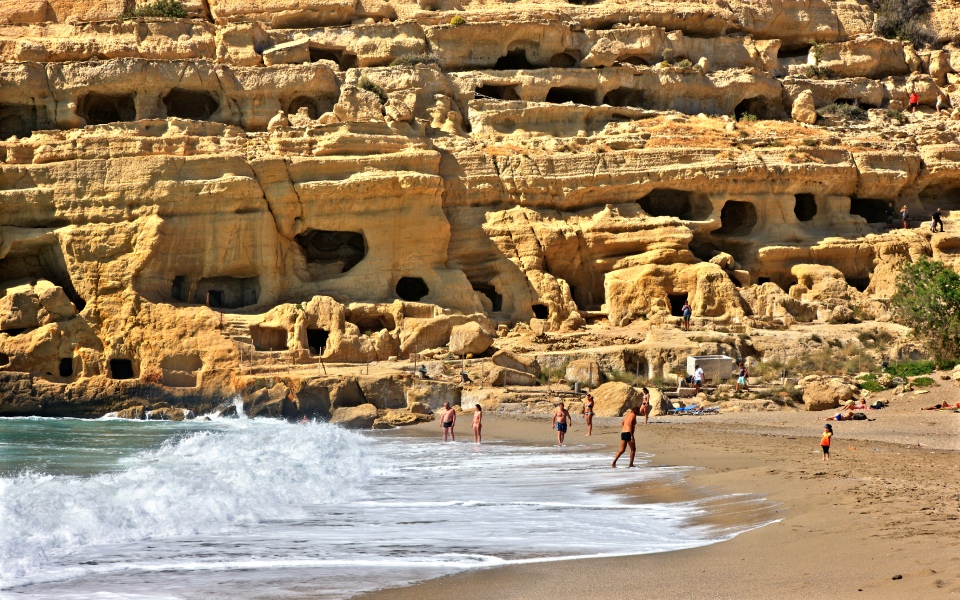
Matala Beach
© Shutterstock
The southern side of Crete is even today the least touristy, and the least developed compared to other areas of the island. Especially in the Irakleio prefecture, the geomorphology and the steep vertical cliffs above the sea have always made it difficult to create large settlements. While in Lasithi, along the southern coastline, there is Ierapetra, in Rethymno there is Plakias, and in Hania there is Paleochora, in the Irakleio prefecture, the larger villages extend only as far as Moires and Aghioi Deka, several kilometers before the shores of the Southern Cretan Sea.
However, in the late 1960s, a small village began to gain fame, not only in Greece but worldwide. In July 1968, the well-known American journalist Thomas Thompson published a ten-page article about his journey to Matala in Life magazine. Young people from all corners of the United States have abandoned the American dream and live in caves by the sea, philosophizing and drinking local wine. This is how Thompson describes the final part of his journey, from Irakleio to Matala: “I arrived at Matala through a rough dirt road full of stones, passing by ancient ruins, cherry trees with branches broken from the weight of their heavy fruit, and donkeys patiently carrying loads of hay three times their size. It was quiet, and the world as I knew it was far away.” Eventually, the reactions of the church and the imposition of dictatorship would force the hippies of America and Europe to abandon the caves of Matala, seeking alternative destinations in India and other countries in Asia.
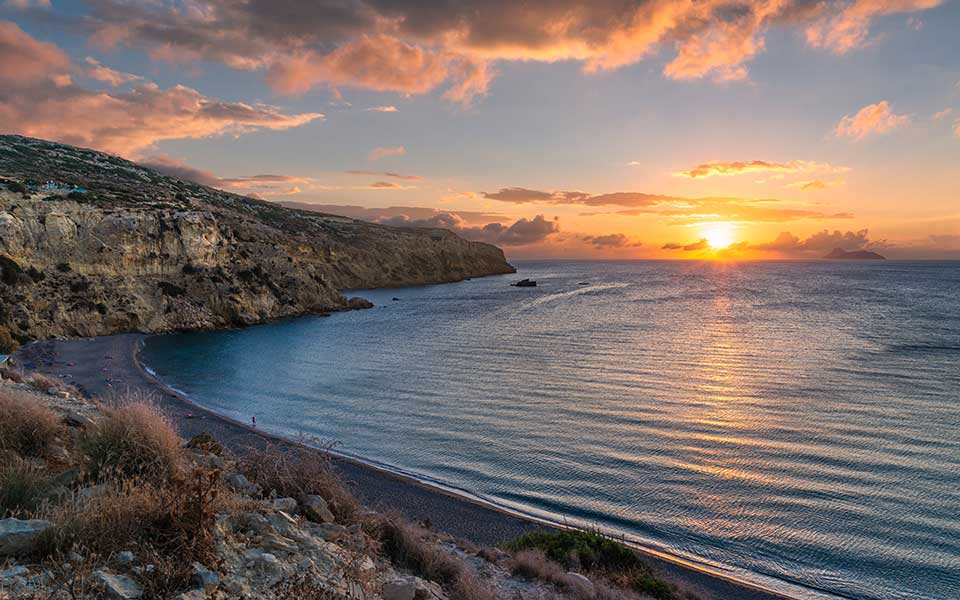
Kommos Beach
© Shutterstock
In the 1980s, Greeks themselves, now wanderers of the countryside, tried to revive the mythical hippie life in Matala, aiming to seek free-spirited communities and people who resemble them. Yet the place had already come full circle, and the imaginative communities of the few had already headed to other beaches. Today, Matala stands as a vibrant open-air museum of hippie culture, where they set up their ideal worlds in the caves above the beach, turning the area into their Mecca, one of many around the world.
The neighboring beach of Kommos remained a secret for many years, one of those heard only by word of mouth. The vast southern coastline of Irakleio provided such opportunities, and groups of young people found the ideal setting for free camping on the sandy beach of Kommos. In the area there are still beaches that remain unknown to most, and those who have discovered them guard these secrets well.
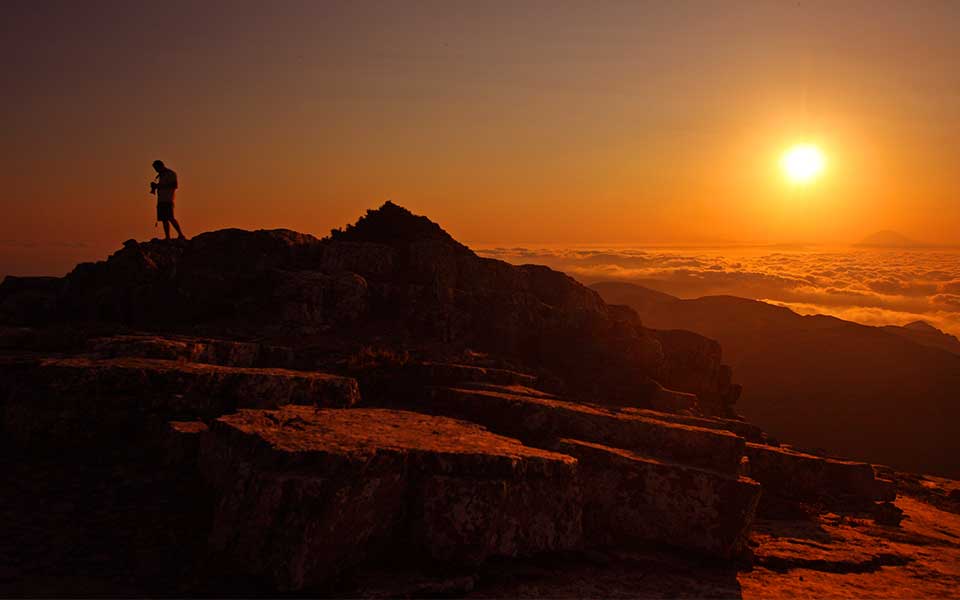
The sunset as seen from the Asterousia Mountains of Crete.
© Olga Charami
Today, things have changed at Kommos. You will find sunbeds and beach umbrellas, kiosks, and tavernas. Of course, the beach is immense, and anyone can distance themselves and achieve a certain degree of autonomy if they wish. However, it generally attracts a large crowd. Nevertheless, a significant stretch of coastline along the Libyan Sea still remains unexplored, as access is either by boat, dirt road, or even through rugged trails. While slightly more well-known beaches like Aghiofarago have smooth roads, others require a 4×4 vehicle or strong legs. Whatever inconvenience, however, is worth the effort: you reach the beach and you’re all alone, while the waters are so clear that you can see the seabed at a depth of three meters below the surface of the sea.
So, the further east you go from Matala, the more wild the beauty of the landscape, the rougher the roads, and the more untamed the nature. You must leave behind the plain of Messara and start ascending the Asterousia Mountains to no longer see rooms for rent signs or souvenir shops with Cretan knives and CDs of Cretan love songs. The entire area belongs to the Natura 2000 network, and there are many reasons for this: the rocky coastlines with numerous caves, the marine habitats, the meadows of Posidonia, the reefs, and the seals, but mainly the rare birds of prey that find refuge here.
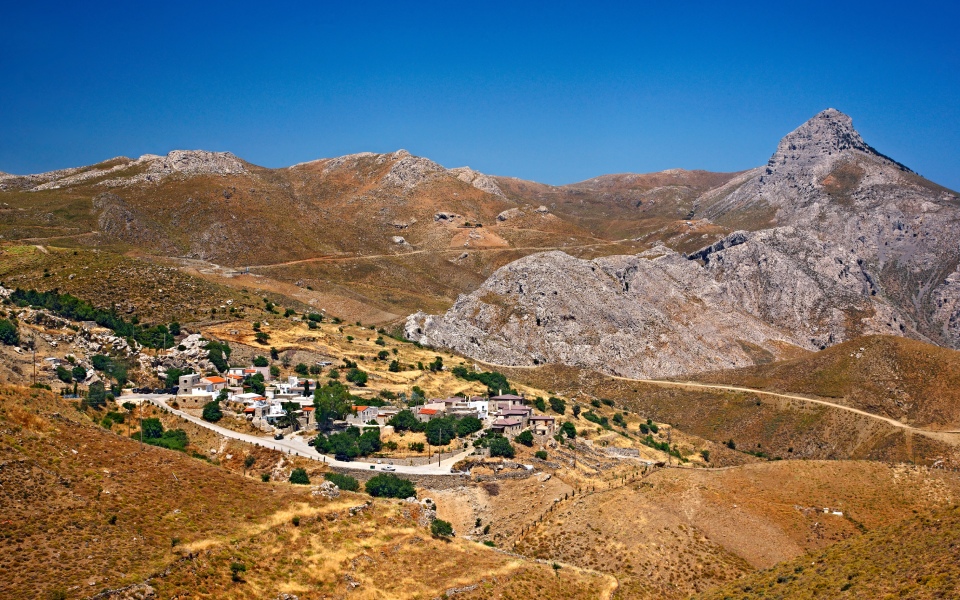
The village of Kapetaniana
© Shutterstock
Asceticism flourished for many centuries here, in the bare, dry, and rugged mountain setting scattered only with shrubs. This is somewhat how the creation of the village of Kapetaniana is explained. Close to the summit of the Asterousia Mountains, in an environment reminiscent of a landscape from the wild west, the few houses of the settlement are built around the church of Panagia, perched on the slope. Here, the Monastery of Vathmos operated, and later the Panagia Kyrie Eleison, gradually giving rise to the settlement around the monastery. In the present-day church, frescoes from the late 14th century are preserved.
A few dozen people live in Kapetaniana, at an altitude of 750 meters, beneath the Kofinas peak (1,231 meters) in the Asterousia Mountains. The village has a few guesthouses and offers numerous opportunities for excursions, hiking, and explorations. Among the most popular hiking routes is the one leading to the mountain’s summit and the path connecting Aghios Ioannis Beach with Koudoumas Monastery.
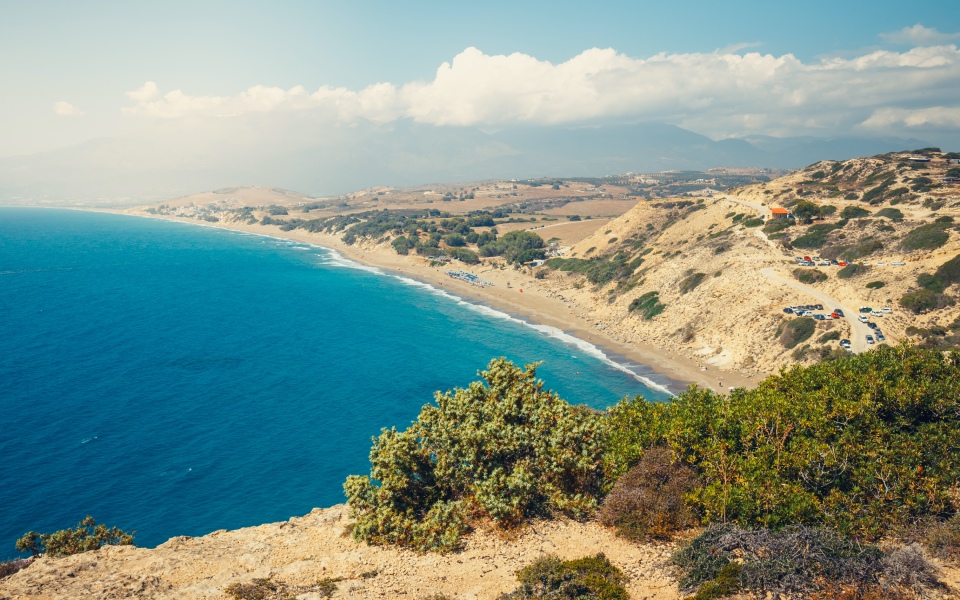
Kommos Beach
© Shutterstock
The secluded beaches and coves in the region of the Asterousia Mountains remain a secret for the few and adventurous, as these paths were opened only a few years ago. Access to most of them requires perseverance and patience, as the paved road network doesn’t reach everywhere and usually involves narrow and winding roads.
The easiest option is the long sandy beach of Kommos. However, it’s worth exploring the beaches located further east. Near the Odigitria Monastery, you’ll find Aghiofarago (holy gorge in Greek), and from where the road ends, you’ll need a 20 to 30-minute walk through the gorge to reach the beach. Along the route, both to the right and left, you’ll see small caves, and it’s said that over 300 hermits have practiced asceticism here, hence the name. The beach has sand and fine pebbles and is not serviced, so make sure to bring a beach umbrella and supplies.
The beach in the village of Lentas is a favorite among locals and has cafes and tavernas, while Trypiti has a taverna and a few tamarisk trees. Near Aghios Ioannis, below Kapetaniana, you’ll find the beach of Elygia with coarse sand and fine pebbles.
Joni Mitchell’s song Carey, released in 1971, was inspired by the summer she spent with the hippie community in Matala.
The Holy Monastery of Odigitria, located near the village of Sivas, is considered one of the oldest monasteries in Crete. Its fortress-like architecture and fortified tower are worth seeing.
A total of 192 bird species have been recorded in the Asterousia Mountains, including golden eagles, Bonelli’s eagles, and peregrine falcons.
The monastery of Aghios Nikitas is built into the rock and dates back to 1640. Nearby there is a small palm forest and a beach of the same name featuring turquoise waters.
The Asterousia Mountains is the third area in Greece, after Olympus and Samaria, to be included in UNESCO’s Man and the Biosphere Programme, an intergovernmental scientific program that seeks to improve the relationship between humans and the natural environment.
Where tropical fruit trees thrive beside...
These sites may not make every...
Experience Crete’s slow food philosophy where...
Discover remote Sfakia in Crete with...